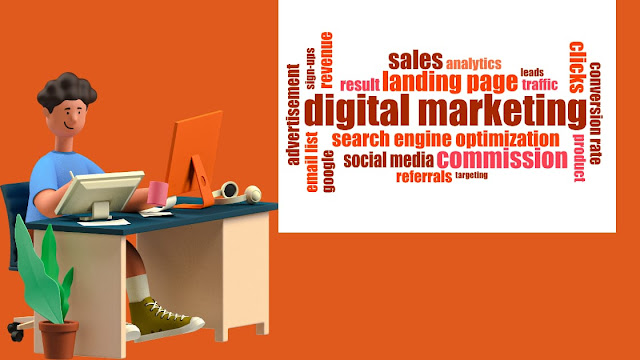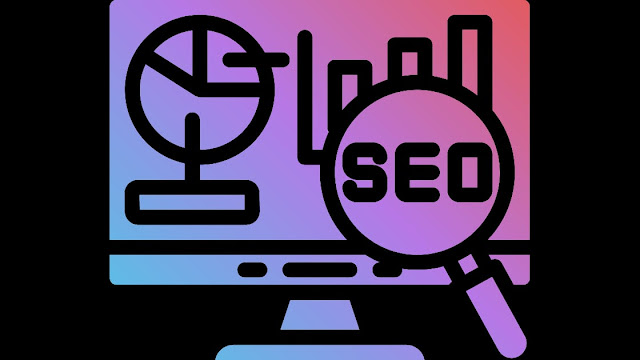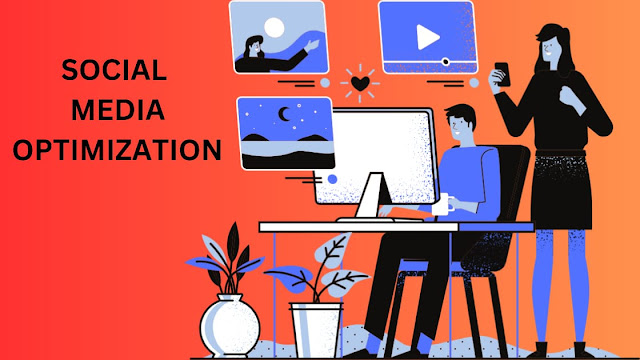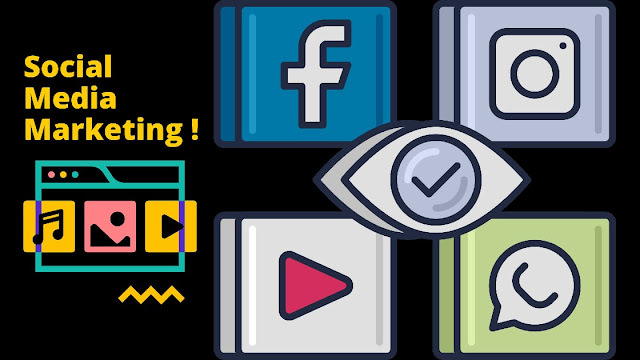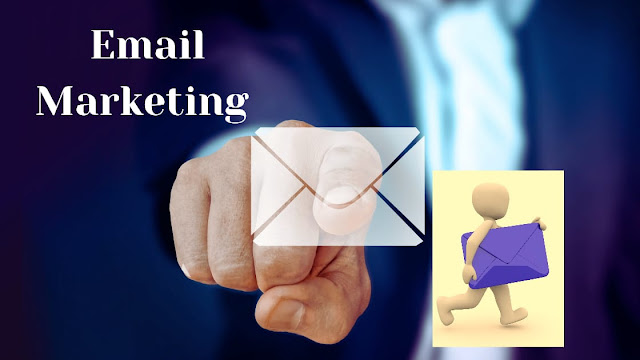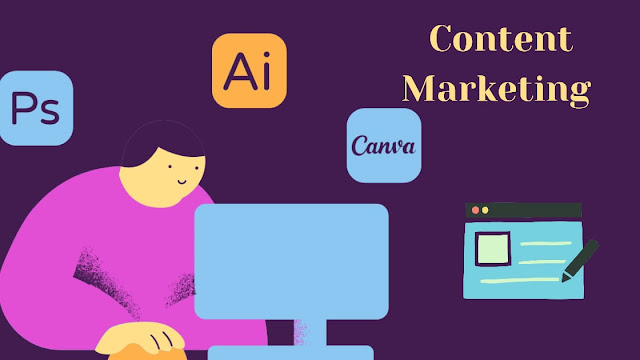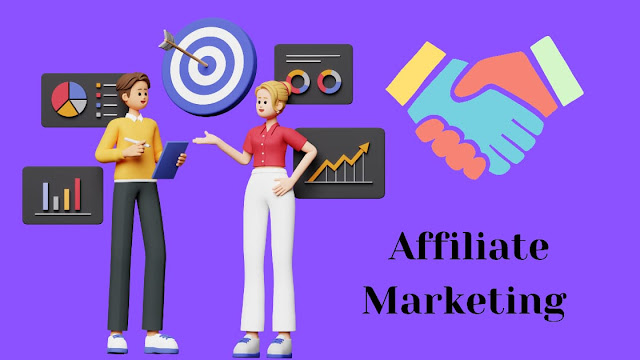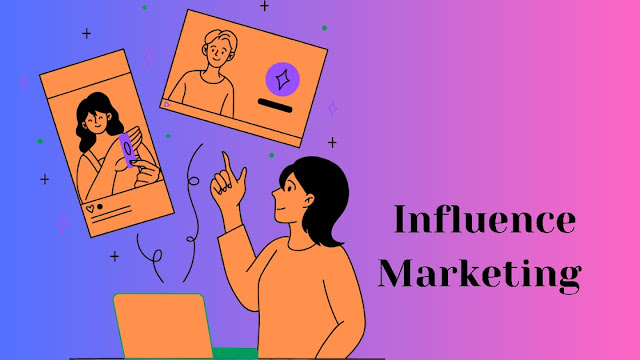Hello Friends
Hope u all are well.Welcome to our blog.🙏
In this article we are tried to create a post about digital marketing. In this post we are talking about digital marketing and it's types. Such as: Search Engine Optimization (SEO) , Search Engine Marketing (SEM), Social Media Optimization (SMO) , Social Media Marketing (SMM), Affiliate Marketing, Email Marketing, Content Marketing, Influence Marketing.
What is Digital Marketing?
As digital Marketing word says marketing efforts using internet and electronic devices.
सरल शब्दों में हम कह सकते है, कि डिजिटल मार्केटिंग वह होता है जहां हम इंटरनेट के माध्यम से अपने प्रोडक्ट्स की प्रोमोशन करते है और मार्केटिंग करते है।
सरल शब्दों में हम कह सकते है, कि डिजिटल मार्केटिंग वह होता है जहां हम इंटरनेट के माध्यम से अपने प्रोडक्ट्स की प्रोमोशन करते है और मार्केटिंग करते है।
Types of Digital Marketing
There are 8 types of Digital Marketing
1. Search Engine Optimization (SEO)
2. Search Engine Marketing (SEM)
3. Social Media Optimization (SMO)
4. Social Media Marketing (SMM)
5. Email Marketing
6. Content Marketing
7. Affiliate Marketing
8. Influence Marketing
2. Search Engine Marketing (SEM)
3. Social Media Optimization (SMO)
4. Social Media Marketing (SMM)
5. Email Marketing
6. Content Marketing
7. Affiliate Marketing
8. Influence Marketing
1. SEARCH ENGINE OPTIMIZATION
Defination: In simple terms SEO means the process to improve our website to increase its visibility on Google
Types of SEO
There are 3 types of SEO
- On page/On site SEO
- Off page/Off site SEO
- Technical SEO
On page SEO
On page SEO (also known as on - site SEO) refers to practice of optimizing webpages to improve a website search engine rankings and earn organic traffic.
Some key content elements to optimize for are
- Title Tags
- Meta description
- Header tags
- Image (alt text).
Off page SEO
Off page SEO (also known as off site SEO) refers to SEO tactics applied outside of a website to improve its rankings. These tactics often include link building, gust posting, Social Media Marketing and more.
Off page SEO Techniques
Some Off page tactics
- Link building
- Content Marketing
- Local SEO (GMB and citations)
Technical SEO
Optimizing the technical aspects of a website for SEO success.
- Submitting your site map to Google
- Creating an SEO friendly Site structure
- Improving your website's speed
- Making your website mobile friendly
- Finding and fixing duplicate content issues
2. SEARCH ENGINE MARKETING
SEM is a dynamic field that requires continuous monitoring, testing, and optimization to achieve the best results. It's a valuable tool for businesses looking to increase their online visibility, attract potential customers, and achieve their marketing goals in the digital landscape.
There are two main types of SEM
- Search Engine Advertising (SEA) or Pay-Per-Click (PPC)
This type of SEM involves creating and running paid ads on search engine platforms,such as Google Ads or Bing Ads.
- Search engine optimization (SEO)
Although SEO is not typically considered a form of SEM, it is closely related and often works in conjunction with SEA.
Both SEA and SEO are important components of an effective search engine marketing strategy.
3. SOCIAL MEDIA OPTIMIZATION
Social Media Optimization (SMO) refers to the process of enhancing a brand's or individual's presence on social media platforms to increase visibility, engage with the target audience, and maximize the effectiveness of social media marketing efforts. SMO aims to optimize various aspects of a social media presence to achieve specific objectives, such as improving brand awareness, driving website traffic, or increasing user engagement.
Key components of Social Media Optimization include:
- Profile Optimization: Creating and optimizing social media profiles by providing accurate and relevant information, including profile pictures, cover photos, and contact details.
- Content Optimization: Developing and sharing high-quality, engaging, and valuable content that resonates with the target audience. This includes text posts, images, videos, and other media formats.
- Keyword and Hashtag Usage: Strategically using keywords and hashtags relevant to the industry or topic to increase discoverability and reach a broader audience.
- Audience Engagement: Actively engaging with followers by responding to comments, messages, and mentions promptly. Encouraging discussions and building a community around the brand or content.
- Sharing and Cross-Promotion: Sharing content across different social media platforms and encouraging users to share content with their networks. Cross-promotion can help increase reach and engagement.
- Analytics and Monitoring: Tracking and analyzing social media metrics and performance data to refine strategies and make data-driven decisions for improvement.
- Timing and Scheduling: Posting content at optimal times when the target audience is most active on social media platforms. This can maximize the visibility of posts.
- Paid Advertising: Utilizing paid advertising options on social media platforms to reach a wider audience and achieve specific marketing objectives.
- Community Building: Building a loyal and engaged community of followers and advocates who actively support and share the brand's content.
- User-Generated Content (UGC): Encouraging users to create and share content related to the brand or products, which can serve as authentic endorsements.
Social Media Optimization Strategy
- Content Strategy
- Optimizing your profile
- Adding a social media badge to your site
- Connecting with Influencers
- Make use of social media optimization software.
4. SOCIAL MEDIA MARKETING
Social Media Marketing Platforms
Facebook, Instagram, Twitter, LinkedIn, YouTube, Snapchat, Pinterest etc..
5. EMAIL MARKETING
Email Marketing is a digital marketing strategy that involves sending targeted emails to a group of recipients with the aim of promoting products, services, or engaging with an audience for various purposes. It is a direct and cost-effective method for businesses and organizations to communicate with their customers, prospects, or subscribers.
6. CONTENT MARKETING
marketing approach focused on creating and distributing valuable, relevant and consistent content to attract and engage a specific target audience.
7. AFFILIATE MARKETING
8. INFLUENCE MARKETING
Tags:
knowledge

